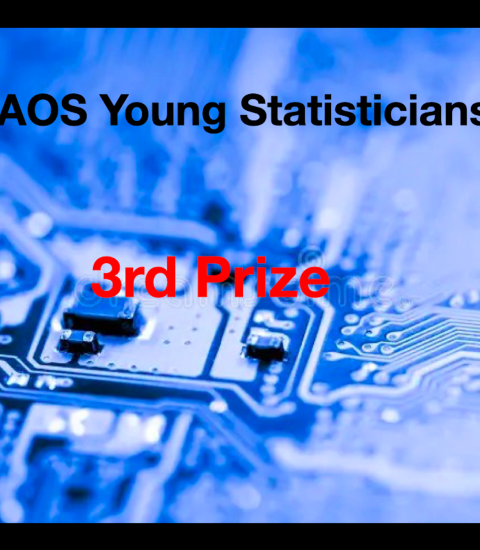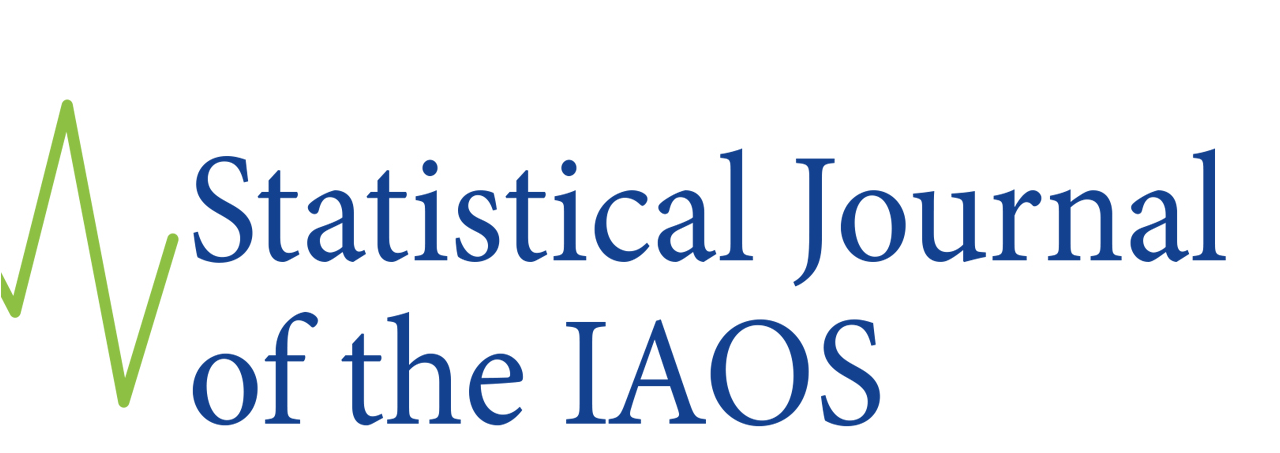
Alba Cervantes Loreto, works since July 2022 as Design Analyst at Statistics New Zealand. Canada. She started at Statistics Canada in January 2022, She finalized in March 2022 a Ph.D. in Computational Ecology from the University of Canterbury, Christchurch, New Zealand and in June 2018 a Bachelor of Science with Honours in Biology from the National Autonomous University of Mexico, Mexico City, Mexico.
Dear Alba, please accept my warmest congratulations on this prize.
SJIAOS: As a starter for this interview, and after having seen your cv can you tell us a bit more about your interesting career moves during the period 2018 - now, from Mexico via the University of Canterbury, Christchurch to Stats New Zealand in Ttauranga Aotearoa?
Alba: Thank you for taking the time to interview me. I am stocked that my paper won the IAOS Prize! My career started as a biologist in Mexico, where I specialized in plant population dynamics and seed dispersion. However, my research always had a very quantitative side, which motivated me to seek a PhD in Computational Ecology at the University of Canterbury. There, I focused on exploring mathematical models to explain how biodiversity is maintained in natural communities. By the time I finished my Ph.D, I was very interested in methods related to statistical modeling and how to apply them to real-world problems.
SJIAOS: Why did you choose to join Stats New Zealand, specifically also seen from your background with a Ph.D. in Computational Ecology?
Alba: Choosing Stats New Zealand was a big career decision for me. As you might guess, it is not an institution focused on ecological research, which is my background. However, it offered me the opportunity to work in the Methods and Design team, which is a highly technical team in Stats NZ that focuses on researching new methods to tackle problems encountered when trying to produce official statistics. Working for the public service motivated me a lot since I yearned for my work to have an impact on the world and not only on scientific papers.
SJIAOS: What is your current function in Stats New Zealand and how do you see your background to fit this position?
Alba: As I mentioned, I am part of the Methods and Design team. Specifically, I work supporting economic and environmental releases. It has been a learning process, but I have found that my skills as a quantitative ecologist have really come in handy. For example, my experience with Bayesian methods has brought a new perspective to analyze environmental trends as well as to identify Māori businesses. I am still learning a lot of new things, particularly about time series modeling, sample design, and imputation methods. It has been really interesting getting to know how official statistics are produced and the challenges that accompany them.
SJIAOS: Your prize-winning manuscript is on the Self Identification of Maori Business. Can you tell us a bit more about the motivation for this rather specific New Zealand/indigenous people research?
Alba: Stats New Zealand regularly produces statistics on Māori businesses through a release called Tatauranga Umanga Māori (TUM). Getting accurate estimates of the indigenous economy is a complex process, and new research avenues are always arising.
This paper was motivated by two main events in the Māori business space. First, another government agency, Te Puni Kōriri (The Ministry of Māori Development), came up with an alternative approach to TUM to identify Māori-owned businesses using administrative data. Then, in 2022 a cross-sector working group led by Stats NZ identified two main characteristics to define a Māori business: that is owned by someone who has Māori whakapapa (i.e., Māori genealogy) and that a representative of that business self-identifies the business as Māori. These two events led opened the question of whether or not Māori-owned businesses (identified through administrative data sets) are also likely to self-identify as Māori. In other words, can administrative data be used to accurately identify Māori businesses?
SJIAOS:… and about the content of the paper? The paper will be published in the Statistical Journal of the IAOS (We will include a link to your manuscript later)
Alba: To answer the research question, in this paper, we link information from businesses that had the opportunity to self-identify as Māori in an annual survey with administrative data to calculate their proportion of Māori ownership. Then, we fit models of varying complexity using a Bayesian multilevel approach to predict the probability of self-identification as a Māori business as a function of businesses’ demographic variables and proportion of indigenous ownership. Using model comparison and out-of-sample predictions we show that Māori ownership is a weak predictor of self-identification as a Māori business. This is the first quantitative approach to understanding the drivers of self-identification as a Māori business and is also a cautionary tale of relying only in administrative data to get estimates of the indigenous economy.
SJIAOS: How were you informed about the YSP prize and what finally stimulated you to write the paper?
Alba: My former manager, Wendy Dobson, really encouraged me to apply well in advance. The paper was first written as an internal report and then polished to be submitted to the YSP prize. I was always very supported by Stats NZ to take the time to do the research and write the paper. I also got a lot of feedback from others at Methods and Design and the TUM team, which improved the paper a lot.
SJIAOS: Indigenous people are an important item in official statistics, based on several manuscripts and policies directed to these groups (see for example the special SJIAOS issue Vol 36 (2019), 2 on Indigenous people. How do you personally perceive and in general how in Stats New Zealand the topic of Indigenous people is on the statistical program?
Alba: Aotearoa New Zealand stands out as its founding document (the Treaty of Waitangi) underpins public policy to ensure it delivers positive outcomes for the Māori people. Thus, Stats NZ has an obligation to produce accurate and timely statistics for indigenous people. This commitment is often part of our research programs, capability building, and work planning.
I have found working at Stats NZ very enlightening regarding all the efforts needed to have official statistics produced with a Māori perspective. There is still a lot of work to be done but releases like Tatauranga Umanga Māori make Stats NZ a pioneer in producing statistics related to the indigenous economy. Personally, I am still learning and building the capability to be a good Te Tiriti (treaty) partner by learning more Te Reo (Māori language) and reading about indigenous data sovereignty.
SJIAOS: What do you see as the most challenging features of the research on indigenous people issues?
Alba: From my limited experience, one of the most challenging features is working from a “co-design” perspective. That is, instead of “experts” deciding what needs to be done and then communicating it to indigenous communities, make projects that are collaborative from the start. For instance, my paper was born thanks to a collaborative effort of Stats NZ with Māori organisations, businesses, academics, and other government agencies that identified two characteristics to define Māori businesses. Without the definition of what constitutes an indigenous business in Aotearoa New Zealand, the modelling work would not be relevant.
SJIAOS: With all the recent new developments in ML, AI, and the ecosystem of data (also containing information on Indigenous population groups), how do you see the production and dissemination work of the national statistical office being organized in 10-15 years?
Alba: It is hard to tell at this point. Certainly, these new methods offer a lot of exciting opportunities to improve how official statistics are produced and should not be ignored. In my opinion, the best use we can have of these tools is to automate processes that would take a long time (e.g., translating code into different languages) and for the exploration of big data sets. However, official statistics have people at their core. An AI or ML tool is unlikely to replace subject matter knowledge or to come up with statistical analyses that have the notion of improving people’s well-being at the core of their design. From a data sovereignty perspective, the use of ML and AI should be heavily regulated so indigenous data stays with indigenous people. I would like to believe that in 10-15 years from now we will be using these tools daily, to alleviate menial tasks and speed our processes, giving analysts more free time to do research.
The winning manuscript will be published in SJIAOS Vol 39/4 (December 2023).
It was a pleasure to have this interview with you and I wish you a lot of success in your career.
